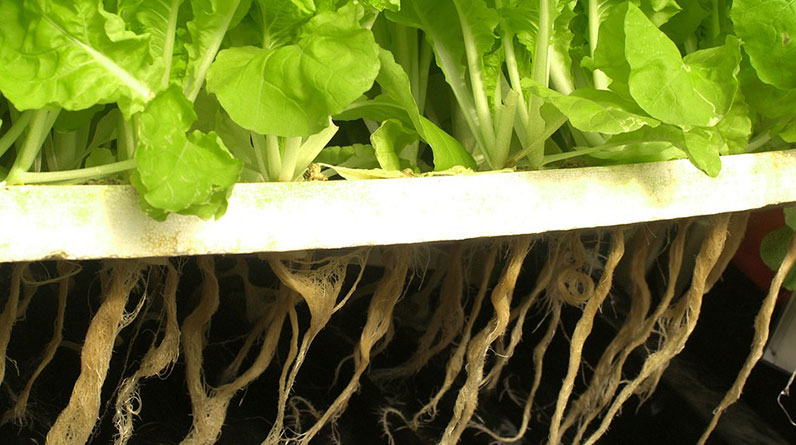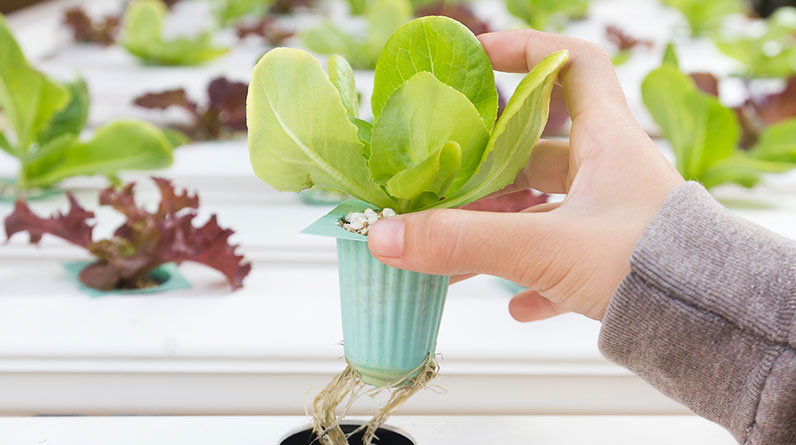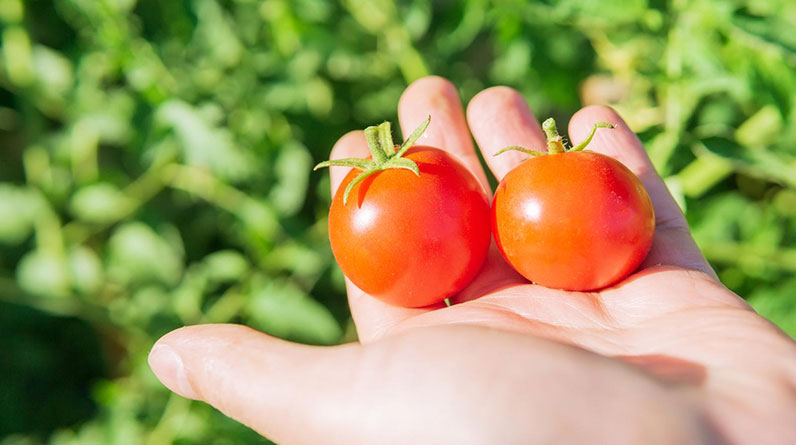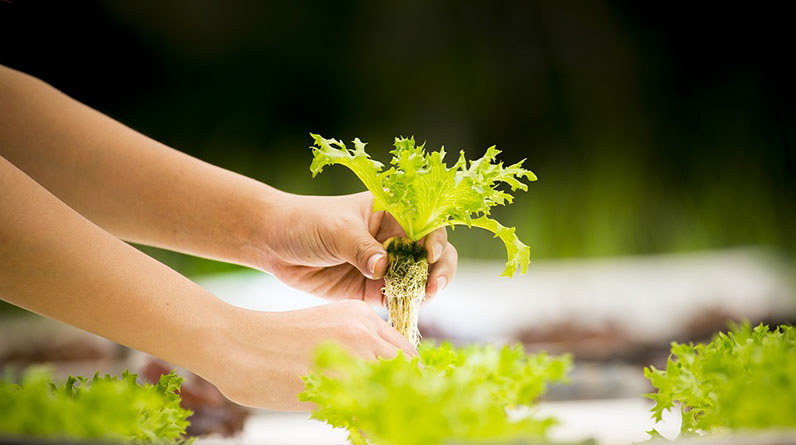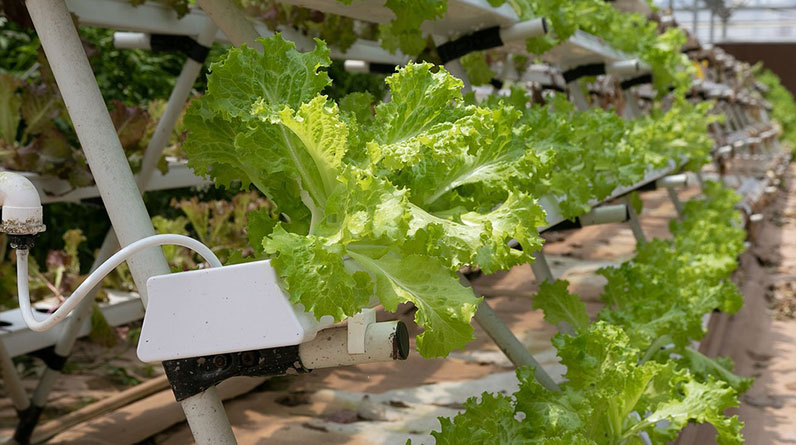
Different Types of Hydroponic Systems
Hydroponic Systems are an excellent way to grow vegetables and fruits. You can expect 2-4 times greater yields from these systems than from traditional gardening techniques.
They’re also more space-efficient than soil-based systems, allowing you to grow more plants in a smaller area.
Deep Water Culture DWC
Deep Water Culture (DWC) is a hydroponic cultivation technique that involves submerging plants’ roots in nutrient-rich, oxygenated water. This provides them with steady access to essential nutrients for rapid, healthy growth.
DWC hydroponic system is ideal for beginners as it doesn’t require substrate-growing media. Furthermore, growers have the power to regulate the temperature of their water reservoir – essential in maintaining dissolved oxygen levels – with ease.
Plants submerged in water 24 hours a day require their root systems to remain oxygenated so they can absorb all necessary nutrients and grow healthy. To do this, an air pump and air stone are used to supply oxygen throughout the nutrient solution.
DWC hydroponic systems come in various varieties, some of which use recirculating water addition. This method is more efficient and scales up easily while still keeping the nutrient solution contained within a central reservoir.
When setting up a small or large DWC system, it is essential to choose an air pump capable of providing enough aeration for your nutrient-rich water reservoir. Without using an effective pump, your plants’ root systems could suffer and yields could decrease!
For optimal DWC hydroponic performance, the air pump must remain running constantly and an airstone placed at the top of the reservoir. This combination ensures that there are sufficient oxygen bubbles rising through the water.
Nutrient Film Technique (NFT)
The Nutrient Film Technique (NFT) is a widely-used hydroponic system popular among home gardeners and commercial farmers alike. This method involves pumping aerated and fertilized water directly into a growth tray, followed by drain pipes for recycling unused solutions rich in nutrients back into the tank.
This system is similar to the Ebb and Flow system, except NFT utilizes a continuous flow of nutrient-laden solution over plants’ roots. This keeps plants moist but not completely saturated, while also allowing oxygen into their root zone which helps prevent root rot and encourages vigorous growth.
NFT farming is more efficient, using up to 90% less water compared to soil-based growing, making it eco-friendly as well. NFT also reduces evaporation and runoff that could otherwise lead to water pollution.
NFT works best with light, fast-growing plants that can be harvested quickly. It makes a great choice for vegetables, fruits and flowers.
NFT systems are easy to set up and require little upkeep. All that’s necessary is a reliable pump to circulate the nutrient-rich solution throughout your NFT system. A low-power submersible pump works best here as it can power a thin stream of solution through its growing channels.
Ebb and Flow (Flood and Drain)
Ebb and Flow Flood and Drain systems are one of the most popular hydroponic gardening techniques, offering easy-to-use features even to beginner gardeners. With these systems, you can grow a wide variety of plants quickly and easily.
Hydroponic ebb and flow systems work by regularly flooding the growing medium with nutrient-rich solution, providing plants with all of the essential nutrients for healthy growth. This ensures that roots receive adequate nourishment.
On a continuous basis, the nutrient-rich solution is pumped into pots or growing trays and then slowly drained back into the reservoir. This cycle provides roots with an ideal environment for optimal root growth and healthy harvests.
This system requires a water pump and timer to run continuously, making it not very resource efficient and costly to run.
Furthermore, if the ebb and flow system isn’t maintained correctly, harmful bacteria can enter the plant’s root zone through flooding cycles. This could result in disease or other issues with its growth.
Maintain the efficiency of your ebb and flow hydroponics system by regularly changing the nutrient solution and cleaning out reservoir, water tank, and growing medium. Doing this will reset pH, EC and nutrient levels in the water as well as give you a chance to thoroughly scrub down all surfaces and components to prevent mold or other damaging microorganisms from growing and ruining your crop.
Aeroponics
Aeroponics is a hydroponic system that utilizes air to deliver nutrient-rich mist directly to plant roots. This efficient growing technique maximizes nutrient absorption while minimizing stress on plants.
Urban farmers with limited soil access will find this method of farming to be a great option, allowing for higher crop yields on 98% less land than traditional methods while using much less energy. This makes it an attractive option for those living in urban areas that do not have access to large plots of land.
A properly designed aeroponic growing chamber is light-proof and almost air-tight, providing the balance of moisture, oxygen, and nutrients to plant roots. Additionally, it keeps pests out while ensuring water absorption occurs promptly.
Aeroponic systems come in two varieties, Low Pressure, and High-Pressure. While they all use the same basic concept, their droplet size and how they’re delivered to the root zone differ.
These systems are easy to set up and ideal for home gardeners. Not only do they require minimal upkeep, but can be automated with a timer.
In addition to encouraging plant growth, this technique also promotes photosynthesis and increases oxygen availability around the roots. This encourages healthier leaf development in your plants. Furthermore, it’s an environmentally friendly form of agriculture as it reduces emissions of carbon dioxide into the atmosphere.
Drip System
Dripper systems are one of the most widely-used hydroponic systems, suitable for a variety of plants and herbs. Not only does it offer excellent control over water and nutrient supply, but setup is simple too – plus, unlike other hydroponic systems, there’s no risk of large algae growth that could negatively affect plant health.
Nutrient solutions are transported from a reservoir (or sump tank) to the grow tray via a pump and drip lines and emitters. Each emitter is placed at the base of the growing medium so that it can provide nourishment to plant roots. As it trickles down into the medium, it may either be taken up by roots or returned back to its source in the reservoir for reuse.
Most hydroponic drip systems utilize a timer that turns on and off several times daily, providing the right amount of water and nutrients to plants with minimal waste. On average, these systems require up to 3 gallons of water per hour depending on the type of emitter and filter utilized.
Some systems also employ air stones to aerate the nutrient solution, providing additional oxygen to plant roots. This encourages faster growth and higher yields.
Drip systems are versatile and ideal for towers and vertical gardens. Additionally, they’re great in small spaces like apartments where space is at a premium.
Wick System
Water’s capillary action helps wick systems draw nutrient-rich water from a reservoir to plants in a grow tray. This is one of the simplest and most straightforward hydroponic setups to set up and maintain.
A wick system is an excellent introduction to hydroponic gardening and takes up minimal space, as it requires no power supply.
This system utilizes embedded wicks that hang from a container to the nutrient reservoir below. To guarantee proper water and nutrient delivery to plants, these wicks must remain in contact with the solution at all times.
Wick systems can be beneficial to many plants, though they may not be the best solution for larger, thirstier varieties or those needing frequent feedings. Lettuce, herbs, and other leafy veggies work well in this type of hydroponic setup since they don’t need a lot of water or nutrients.
Another key advantage of hydroponic gardening is that it keeps plant roots continually moist. This prevents diseases like pythium and phytophthora from taking hold, which could drastically reduce growth rates.
When creating this system, the growing medium should be porous and composed of materials with excellent wicking properties. Vermiculite, perlite or soilless mixes are all excellent choices as they won’t become soggy over time and can effectively draw water in.
